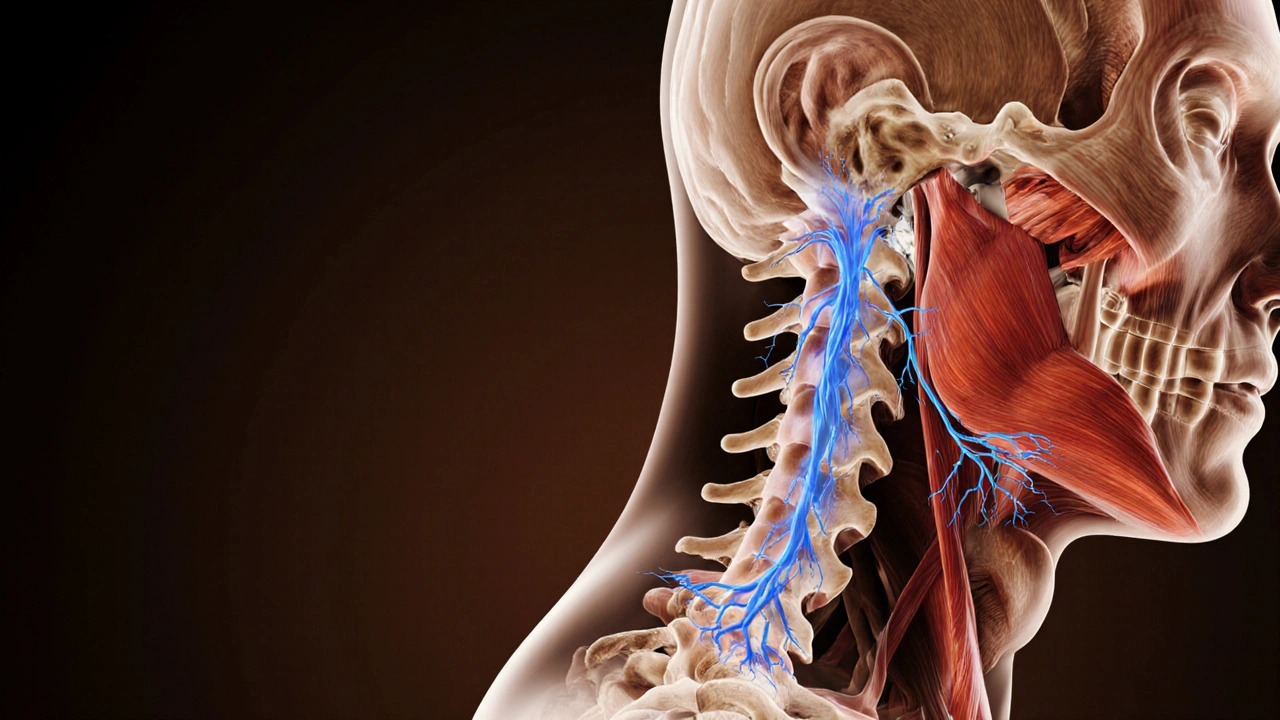Neck Stiffness: What It Is and How to Deal With It
When dealing with neck stiffness, a tight, painful feeling in the neck muscles that limits movement. Also known as cervical rigidity, you’ll often notice it popping up with headache, pain that radiates from the head to the neck and it gets worse if you spend hours in poor posture, slouching or bent‑over screen time. Understanding neck stiffness helps you spot the trigger fast and take action.
Muscle tension, stress and everyday habits
One of the biggest drivers of neck stiffness is muscle tension that builds up when you’re stressed or sit in the same spot too long. The cervical muscles act like tiny springs; when they’re constantly compressed they lose elasticity and start to ache. Stress releases cortisol, which tightens those springs even more. Simple habits like checking your phone with your chin down, sleeping on a pillow that’s too high or too flat, or lifting heavy bags on one shoulder can all tip the balance. When the muscles tighten, they pull on the cervical spine, creating a feedback loop that often brings on a dull headache.
Another common factor is dehydration. Water helps keep the discs between vertebrae supple. Skip your fluids and those discs lose shock‑absorbing power, forcing the muscles to work harder. The result? A knotty feeling that makes turning your head feel like moving a brick.
Medication side effects and other medical causes
Some prescription drugs can directly cause neck stiffness as a side effect. Antidepressants like trazodone, mentioned in our guide on headaches, sometimes lead to muscle rigidity or a “stiff neck” feeling. Even over‑the‑counter pain relievers such as ibuprofen (Motrin) can mask the pain long enough that you keep using the same bad posture, worsening the underlying tension. If you start a new medication and notice neck stiffness within a few days, check the label for muscle‑related side effects and talk to your pharmacist.
In rarer cases, neck stiffness signals a more serious problem like meningitis, where the inflammation of the brain’s protective layers makes the neck painfully rigid. Fever, vomiting, and extreme sensitivity to light are red‑flag symptoms that need immediate medical attention.
Posture, ergonomics and quick fixes
Fixing posture is often the fastest way to loosen a stiff neck. Align your screen at eye level, keep your elbows at a 90‑degree angle, and use a chair that supports the natural curve of your spine. Take a 1‑minute stretch every hour: tilt your head toward each shoulder, gently turn side to side, and look up and down slowly. Those micro‑movements keep the cervical muscles from locking up.
Heat therapy works well too. A warm shower or a microwavable heat pack applied for 15 minutes relaxes the muscle fibers and improves blood flow. If you prefer cold, an ice pack for 10 minutes can reduce inflammation after a sudden strain.
When the stiffness is persistent, consider a short course of gentle over‑the‑counter NSAIDs, a physiotherapist‑guided exercise program, or a massage focused on the trapezius and levator scapulae muscles. Most people find that a combination of regular stretching, better ergonomics, and staying hydrated clears up the problem within a week.
Now that you know what drives neck stiffness, how it intertwines with headaches, posture, and even some meds, you’re ready to pick the right relief strategy. Below you’ll find articles that dive deeper into specific triggers, safe medication tips, and step‑by‑step stretches to keep your neck moving freely.
How Headaches and Neck Pain Are Connected - Causes, Types, and Relief Strategies
Explore why neck tension often triggers headaches, learn to spot cervicogenic vs tension‑type pain, and discover practical treatments and prevention tips.
learn more